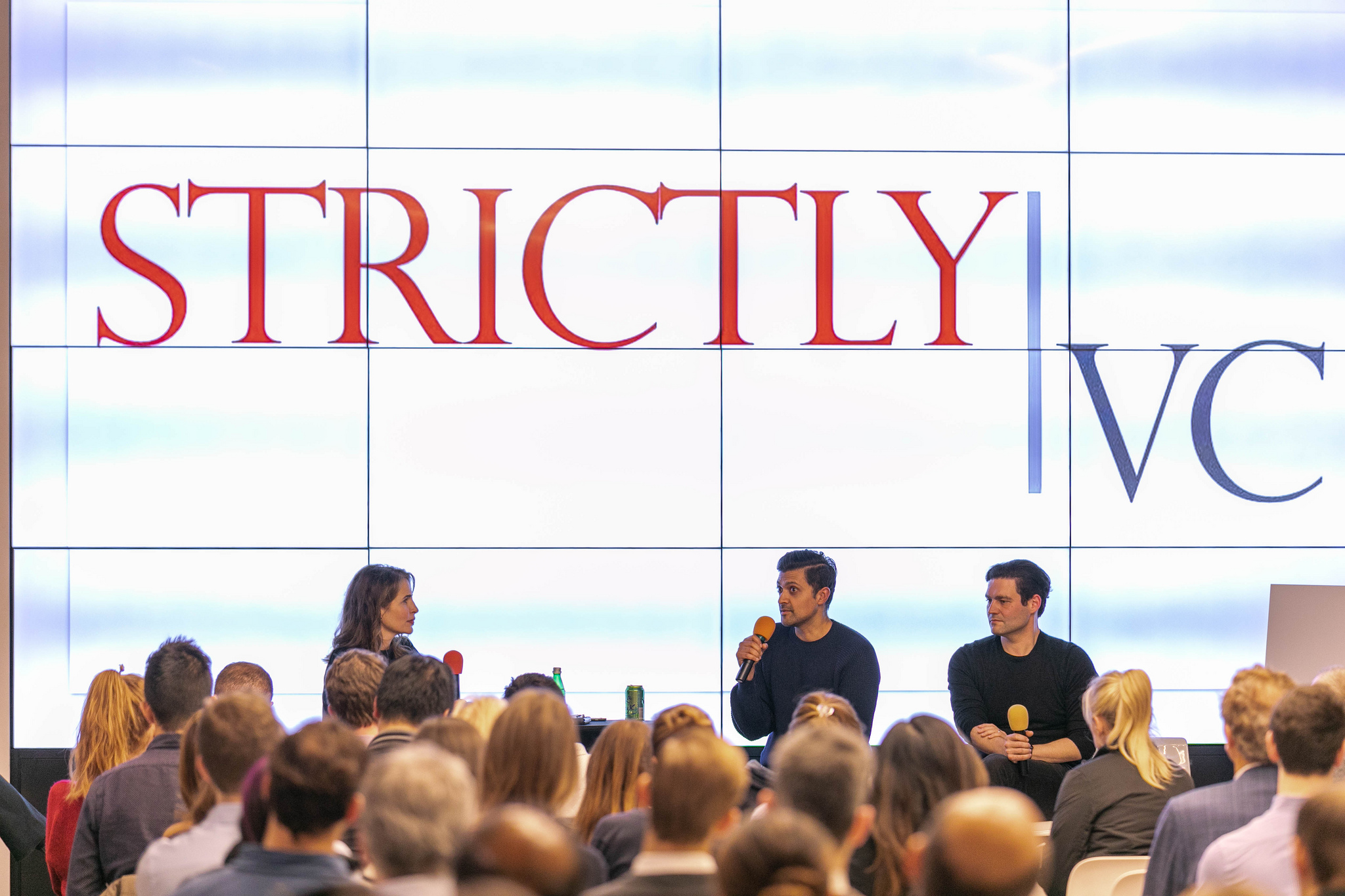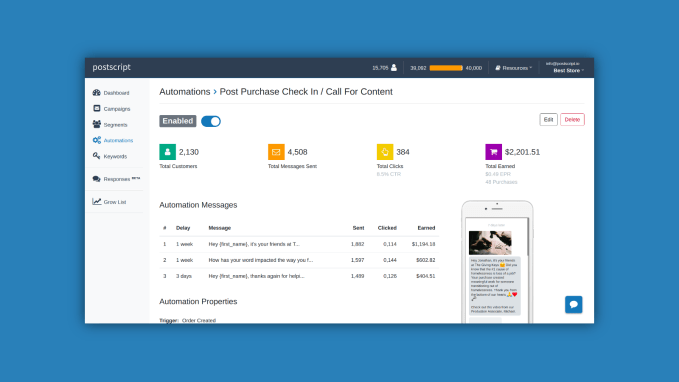Late last month, the venture firm Kleiner Perkins began an official reboot, with a new, $600 million fund, as well as some new faces blazing the trail for the outfit going forward, including Mamoon Hamid and Ilya Fushman, investors who joined Kleiner from Social Capital and Index Ventures, respectively.
Their roles at the 47-year-old firm are being watched closely. Kleiner was long considered part of a very small circle of top venture funds, but a series of missteps in recent years had yanked it in another direction, with a seemingly endless string of departures further tarnishing its brand. Now, Hamid and Fushman, friends whose paths crossed as children in Frankfurt, Germany, have an opportunity to restore KIeiner to its former glory.
Last week, at a small event hosted in San Francisco by this editor, Hamid and Fushman talked about Kleiner, touching on people who’ve left the firm, how its decision-making process now works, why there are no senior women in its ranks, and what they make of SoftBank’s Vision Fund. (Hint: Hamid doesn’t entirely get it.) They also talked about why they are putting their necks on the line to turn Kleiner back into a powerhouse. Much of our conversation, edited lightly for length, follows.
TC: Mamoon, you left Social Capital, a firm that you’d cofounded, to join Kleiner Perkins in late 2017. Why?
MH: I’d left [my previous venture role with U.S. Venture Partners] n 2011 to start Social Capital with a couple of friends. And it was right around when Steve Jobs had passed away And it seemed like the foolish thing to do. But we were able to raise our first fund and get off the ground and raised a number of funds after that and made some really great investments. Then I had a chance to join Kleiner. There was a point when Kleiner and Social Capital were talking about merging, but it’s hard to do mergers, of private companies, venture capital firms. It’s hard to do, and I think it was the right decision on both parts not to do it. But I got to know the Kleiner folks through that process and it was too compelling to pass up [when they reached out].
TC: How would you characterize your experience at Social Capital, and how does it inform your work at Kleiner?
MH: I’d say venture capital is a very boutique asset class. It doesn’t scale all that well as it comes to both people inside of a firm and the capital you deploy into companies. All you do is create more clones of those companies . . . because the world is finite in terms of what should be out there and what should be used. There shouldn’t be seven versions of Slack; there should be one or two maybe.
The same is true of venture firms. I think what works is a small, nimble, group of dedicated domain experts in certain areas. You can’t have armies running around with your business card [reading] Social Capital. And I think how we look at ourselves at Kleiner Perkins, that’s precisely who we are and who we used to be. If you look at [Kleiner’s] best days, it was a group of five to seven partners, making some really great decisions.
TC: Were you concerned about trading one dramatic situation for another? You knew what was happening inside Social Capital; meanwhile, everyone knew that Kleiner was going through some kind of transition, with a lot of people leaving.
MH: I think part of [my focus] was to be this small group of people, in consumer, enterprise, and I could foresee that happening. Because that was the right strategy, it wasn’t a surprise to me. It wasn’t like I got there and was surprised and thought, Oh my God, this is happening. It was supposed to happen. This is where we driving it to.
TC: Ilya, what made you think this was the right move when Mamoon then asked you to leave Index Ventures to join Kleiner?
IF: Index is a top European venture capital firm. I knew Danny Rimer from Dropbox. Mike Volpi is a partner, and he helped me a lot. And I helped [the firm] get established here in San Francisco, and I did that for about three years, which was frankly an amazing time. And like Mamoon deciding to leave a firm that he started, for me, the decision to leave Index and this part of Index that I helped establish was really difficult — one of the most difficult career decisions of my life, not just because of the firm but the people and the companies they are a part of. So I took a long time to think about this.
But Mamoon and I had chatted on and off for about three years, and a lot of what we talked about as we worked on [shared portfolio companies including] Slack and Intercom and a few other things was what would an ideal venture firm look like if we built it from the ground up. What would be the principles, how would we structure it, how big would it be, how would we think about people who come into it and progress to different levels. And what we envisioned is what we’re building now at Kleiner Perkins. For me, the opportunity to build that atop 47 years of investing history was a once-in-a-lifetime opportunity.
TC: Before we move on, why the split with Mary Meeker and the growth stage business? My understanding was the firm’s best returns in recent years have come from that later-stage side.

IF: Certainly, there were some great logos in the growth-stage fund. But I think returns from [earlier-stage] venture were pretty great as well.
I think where we came down as we were thinking about strategy was this notion of how do you compete. There’s a lot more capital at the seed stage; there’s a lot more capital in growth stage. When we think about ecosystem and landscape of venture, when you look where we’re focused predominately today — which is Series A — the type of work we do and the kind of skills required is mentally quite different from late-stage investing. There’s basically no data. We’re helping founders hire their first sales leader and figure out their product strategy and helping them navigate partnerships. And when you look at the late-stage growth side, a lot of it is financial engineering, and you have to be really good at it, because you have to price things really well. For us, if we’re off 20 to 30 percent on price, it’s probably okay as long as we pick the right company.
And mutually, as we thought about our individual fundraising strategies and our futures, we came to the conclusion that it made complete and total sense for the folks on the early stage and for Mary and other folks to go off and do late-stage investment.
TC: What about Beth Seidenberg and Lynne Chou O’Keefe, two life sciences investors who also left last year? Is health care not interesting to Kleiner? It seems like it’s suddenly interesting to other firms.
MH: Beth is one of the world’s best life sciences investors. She actually retired from Kleiner Perkins. That was her intent with the latest fund, and she has always lived in L.A. and she started her own fund down there and that was part of her plan. So that was not a surprise.
We still do health investing. I think all of us have done digital health investing . . .though they’re more like consumer or enterprise companies. They just happen to sell into the healthcare vertical.
TC: Tell us about the decision-making process and whether that has changed since the two of you joined.
IF: Given that we’re small, we can make decisions very quickly. Sometimes you have to make a decision in a matter of hours or days, and we want to be able to do that, and you can only achieve that with a small, tight-knit group.
So our process is pretty simple. We get together. And you kind of read the room. And if I look at Mamoon and he’s looking at me really skeptically when I’m excited about an opportunity I’m bringing in, I’ll think about it and vice versa. We want the process to be organic and as sort of non-structured as possible to [surface] those decisions that aren’t always unanimous.
If you look at data in venture, the deals where everybody thinks they are bad are probably pretty bad. The deals that everybody thinks are good, they do okay. But it’s really the ones where there is disagreement, where’s there’s controversy, those are the outliers. And it makes intuitive sense, because if it was obviously correct, someone would have build it before.
TC: I hear you have some [junior] investors who are rockstars, including Monica Desai. Will she be a partner some day? Does Kleiner have an apprenticeship model on your watch?
IF: There are various ways to think about a generational transformation or evolution. Our view is we want folks who are thinking long term in their career as investors, who are thinking about and curious about technology, otherwise, you’re pretty bored. And we absolutely think of it as an apprenticeship, learning model where these folks get to work with not just one particular partner or domain but really across the partnership. The goal is to have them invest as quickly as possible and then help companies grow. So it is for us, hopefully Monica and Annie [Case] will be partners very soon.
MH: All five people who are partners today at KP grew up in the business. We were all associates at some point in our career and all of us wanted to be venture capitalists. So there really has to be this mindset of, I really want to do this job, I want to do it really well, and to help great founders build great companies. And we want people to really internalize that aspect of what we do.
TC: Kleiner isn’t the only firm to have five male partners. But given the firm’s history and the press attention paid to it, I wonder: did LPs push back on [your gender makeup]?
MH: LPs don’t push on it. They ask about it. But they also want to make sure that we hire the right people. You’re making a 10-year hire. I’d known Ilya for three years plus before we consummated this relationship. And the KP folks had known me for 10, 15 years before I came to KP. And [longtime partners] Ted [Schlein] and Wen [Hsieh] had already been at KP, Ted for 22 years and Wen for 13 years. So these are really long-term decisions that you’re making, and it’s really important to get it right.
If you spend a year grooming someone, the worst thing that can happen is six months to a year later they’re gone because there’s organ rejection. And that applies to a man or woman, it doesn’t matter. But we’re hiring a consumer partner right now and we’ve been pretty public about wanting some of our partners to be female as well. But you do have to get the chemistry right, the desire to do this job right — everything has to really fit.
TC: What do you think about SoftBank and its Vision Fund? Is it the best thing to happen to venture capital? The worst thing? Soon to be tomorrow’s news?
MH: I’m confused by them. At the Series A, it really doesn’t have an impact. However, the downstream effects [are seen] as companies mature or need to raise capital, or don’t need to raise capital and are offered a bunch of money from SoftBank, which can draw out things. We’re seeing less and less of that, by the way. [There’s] less and less of ‘Here’s money that you don’t need, because we have lots of money to deploy.’ I don’t know why, but last year we saw a lot of that.
I’ve only worked with one company that has raised capital from SoftBank and there’s was a very normal looking round. But I don’t know what to make of SoftBank right now.
TC: How are you feeling about the market generally? A few weeks ago it looked like things were slowing down. Now it seems to have shifted yet again.
MH: It’s weird to be in a nine-, ten-year old bull cycle. Hindsight and statistics suggest that we should have a recession soon. But we’ll tell you that the view on the ground, and the companies we’re involved with, that there’s really strength in almost all of them. These are normal companies that should see softness in their business if there’s something coming down the pike, and we haven’t seen that softness yet in our order numbers. In fact, they’re stronger than ever before.
I don’t know. Maybe we’re in for a 15-year bull run. Maybe there’s this perfect storm of technology coming of age and being so mainstream that there’s not just hundreds of millions of users but billions, and the markets are going to continue to expand and tech companies will continue to thrive, which I think truly is the case. So I don’t know when this one stops. I’m not a macroeconomist, but so far, on the ground, it all looks good.







